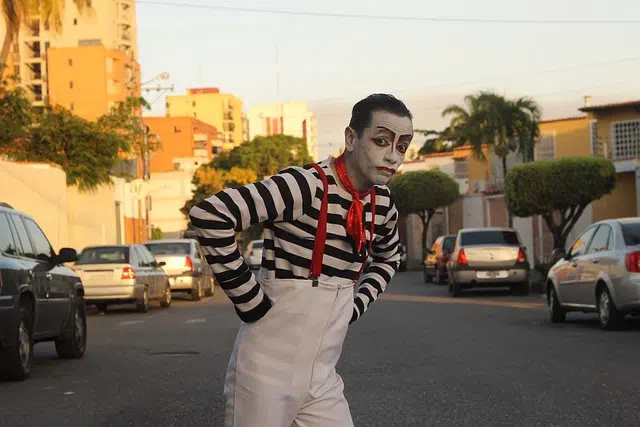
Many street artists resort to pantomime.
Pantomime is a representation that is performed through gestures and figures, without the intervention of words . The term comes from a Greek word that means "that everything imitates."
Specifically, we can establish that pantomime is a word whose etymological origin is in Greek since it is made up of two words from that language: pantos , which comes from the prefix pan - which is equal to "everything", and mime , which can be translated as " imitator".
What is pantomime
Pantomime is a performing art that uses mimicry as a form of artistic expression. On the other hand, communication through gestures or gestures is known as mimicry.
It is interesting to note that if there is a country that has become a reference in pantomime, it is none other than England. So much so that this nation has its own subgenre in this sense and is characterized by being a perfect combination of drama and humor.
It was in the 18th century that this aforementioned subgenre was born and it did so at the hands of the actor John Rich. Specifically, what he did was establish the British pantomime as a way to entertain the public attending operatic performances between acts. And in his case he specifically relied on the figure of a harlequin to carry it out.
The work of mime
The person who dedicates himself to pantomime as an art is called the mime. The key in the performance of mimes is the renunciation of the use of oral language during the performances; some mimes even reject any type of sound.

A mime expresses itself through mimicry and therefore appeals to pantomime.
Mimes usually act individually (that is, they do not participate in works with several artists, but rather limit themselves to imitating people or things with their mime). Pantomime, in this sense, is a very popular street art .
There is a customary makeup for mimes, who usually paint their faces white. It is also common for them to wear striped t-shirts and hats or berets.
Great exponents of pantomime
Charles Chaplin (1889–1977), Buster Keaton (1895–1966) y Marcel Marceau (1923–2007) son algunos de los artistas que, a lo largo de sus carreras, han demostrado su talento para la pantomima.
All this without forgetting the great Charlie Rivel, a clown who opted for pantomime when performing his performances and who was a great follower of Charlie Chaplin himself.
In the same way, it should not be overlooked that there is what is known as pantomimic dance. Dance and theater are the arts that are framed and united in one that throughout history has had masterpieces such as, for example, "The Syrian Slave", from 1841 and which was performed in Barcelona.
The notion associated with farce
Another use of the term is related to farce or the action of pretending something that, in reality, is not felt .
In this sense we find the notion in expressions such as "End the pantomime and stop pretending that you are worried: I know that the news has not affected you" or "The mayor put on a pantomime to try to convince the people that he is making an effort to solve the situation, although few believed him .
